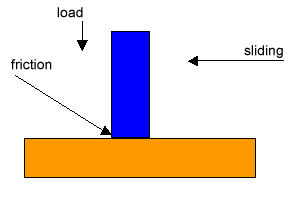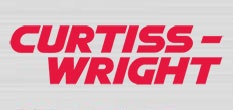Design Engineering
Friction
Definition – The resistance offered to the movement of one body past another body with which it is in contact. The amount of friction depends on the nature of the contact surfaces and on the magnitude of the force pressing the two bodies together, but not on the surface area of the contact surface.
Friction and Coatings – Dry film lubricants offer very unique performance properties when friction is a concern. In most cases, solid film lubricants provide a lower coefficient of friction than traditional wet lubricants. Much of this improved performance comes from the resin’s lubricating properties. Depending on the resin system, the lubricant can substantially decrease both the static and dynamic friction. Due to their performance properties, many of these dry film lubricants are used for performance problems associated with rolling and sliding friction.
The following is a graphical example of Friction:

Types of Friction
There are two kinds of friction: static friction and kinetic friction:
Static friction is the force between two stationary objects. Static friction is always greater than kinetic friction. In fact, at the momentary point when objects start to move in relation to one another, the friction, called starting friction, is at its highest.
You may recall when you try to move a heavy object, the most force is required to start it moving. Once an object is in motion, it tends to stay in motion.
There are several types of kinetic friction, including sliding friction and rolling friction. Sliding friction, flat objects moving against each other, is greater than rolling friction, a rolling object moving against a surface. (This principle is applied in ball bearings.)
The Coefficient of Friction
The coefficient of friction is the value of the force necessary to move one body over another horizontal body at a constant speed, divided by the weight of the body. For example: if a force of 30 newtons is necessary to move a body weighing 200 newtons over another horizontal body at a constant speed, then the coefficient of friction is 30 / 200 or 0.15.
Many different materials yield different coefficients of friction. E/M engineered coatings are designed to reduce the coefficient of friction significantly. Two benefits are less force required to move the body and less wear.
Torque / Tension and Friction
When component design involves the assembly of nuts and bolts, it is important to determine the required minimum clamping force and the yield point of the fastener. The torque strategy is achieved by minimizing the clamp load and not the yield point of the fastener. When a bolt meets resistance, such as clamping a flange, it continues to rotate until there’s a balance between the torque and the sum of bolt tension and friction. To express this relationship mathematically:
T = K x D x F
T
K
D
F
Torque (twisting force)
Constant that compensates for thread friction(friction constant)
Nominal diameter of bolt
Induced force (clamp load)
K-factor varies significantly since it is the net effect of as many as 70-80 variables. The fastener finish is the most important. In an extreme case changing the fasteners finish alone can increase clamp load up to 100%. Other factors that affect K-factors are fastener material, insertion speed, hardness, and thread tolerance.
Application Examples
The following are examples of components with friction problems and the engineered coating services that solve these problems.
Component / Part
Problems Solved
Industry
Adjusting Screws for Chairs
Friction
Fasteners
Box Magazines – 30 Round
Friction, Wear, Corrosion
Military
Double Ended Shafts
Friction
Automotive
Electronic Switching Components
Anti-seizing
Chemical Processing
Engine Fasteners
Anti-seizing
Aerospace
Fasteners For Aerospace
Anti-seizing
Fasteners
Fasteners for Modem
Friction
Fasteners
Flange Bearings
Friction
Automotive
High Pressure Tubing Connectors
Friction, Cost effectiveness
Industrial
Lead Screw for Step Timer
Friction, Wear
Industrial
Seat Belt Bolt
Friction
Automotive
Seat Belt Bolt
Friction ( Torque )
Automotive
Pins
Friction, Wear
Industrial
Questions
Please see identify problems for a quick response to any type of friction and/or other questions that you have on how Everlube Products’ coatings can help solve your design challenges.
